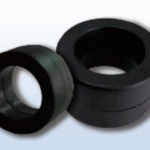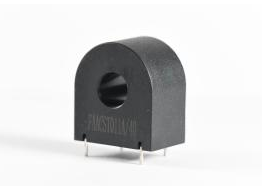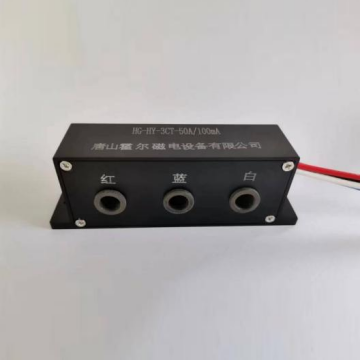Iron-Based Nanocrystalline Toroidal Cores Improve Switching Power Efficiency

With the accelerated pace of power electronics today, compactness, stability, and efficiency are the cry of the day. As businesses drive power conversion systems to higher and higher levels, traditional magnetic materials can’t keep up. Enter the iron-based nanocrystalline core, the iron-based nanocrystalline ribbon, and the iron-based nanocrystalline toroidal core for a switching power supply. These new-generation materials are revolutionizing the design of transformers, inductors, and power supplies with unparalleled performance and reliability.
What is an Iron-Based Nanocrystalline Core?
An iron-based nanocrystalline core is a magnetic core material composed of nanocrystalline alloys, which are manufactured through the rapid solidification of molten metal. The alloys are typically composed of iron, silicon, boron, and small amounts of other elements. They form a nanostructure with grain sizes of less than 20 nanometers when adequately processed.
This nanostructure exhibits superior magnetic properties, including a high saturation flux density, low coercivity, and good temperature stability. Iron-based nanocrystalline cores exhibit significantly lower core losses compared to conventional silicon steel or ferrite materials, which implies higher efficiency in switching power supplies and other high-frequency applications.
Iron-Based Nanocrystalline Ribbon: The Core Component
The core component is the iron-based nanocrystalline ribbon. The ribbon is manufactured by rapid quenching technology, wherein molten alloy is quenched at an extremely high rate onto a rotating wheel. The resulting product is a thin and flexible ribbon with a nanocrystalline structure that is controlled.
The ribbon itself takes precedence because it can be precisely wound or cut to form a wide variety of magnetic core shapes, like toroidal and E-cores. The production versatility of the ribbon allows designers to produce customized solutions for high-frequency inductors, transformers, and chokes. The low magnetic loss of the iron-based nanocrystalline ribbon also guarantees that even at high operation frequencies, the power supply is efficient and reliable.
Iron-Based Nanocrystalline Toroidal Core for Switching Power Supply
Among the most widespread is the iron-based nanocrystalline toroidal core for a switching power supply. Toroidal cores are especially well-suited to compact and efficient design as they are closed-loop, reducing magnetic leakage and electromagnetic interference (EMI).
For switching power supplies in which high-frequency operation is paramount, such toroidal cores are the best. They provide:
- Low core loss at high frequencies – minimizing inefficiency and generating less heat.
- High permeability – allowing the construction of low-profile, light-weight configurations with no compromise in performance.
- Stable temperature performance – offering consistent performance even in heavy-duty industrial or automotive applications.
- Optimum noise suppression – of critical importance in sensitive electronic equipment where clean power is paramount.
As a result of these advantages, iron-based nanocrystalline toroidal cores have been used in product categories such as server power supply, solar inverters, electric vehicle chargers, and industrial automation equipment.
Advantages Over Traditional Materials
Compared with ferrites or silicon steel, nanocrystalline materials possess the following benefits. Ferrites possess satisfactory high-frequency performance but are disadvantaged by poor saturation flux density, i.e., larger core sizes in high-power applications. Silicon steel possesses satisfactory magnetic properties at relatively low frequencies but entails prohibitive core loss at higher switching frequencies.
However, the iron-based nanocrystalline core offers:
- Broad frequency response – usable for low and high-frequency applications.
- Compact size – enables miniaturization without sacrificing efficiency.
- Energy conservation – reduced loss equates to lower operational costs.
- Strong and durable life – rugged material characteristics enhance dependable operation.
Applications across Different Industries
The broad set of applications of the iron-based nanocrystalline core and iron-based nanocrystalline ribbon is that they find applications across a wide range of industries:
- Renewable energy – Inverters for solar and converters for wind turbines.
- Automotive – Onboard chargers and electric vehicle DC/DC converters.
- Telecommunications – Ensuring stable power supplies for 5G and data centers.
- Industrial automation – Supplying power for robotics, drives, and control systems.
As there are more demands for higher efficiency, the adoption of iron-based nanocrystalline toroidal cores by switch power supplies will also grow.
Conclusion
The drive towards energy-efficient high-performance power electronics is leading magnetic materials development. The iron-based nanocrystalline core, the iron-based nanocrystalline ribbon, and the iron-based nanocrystalline toroidal core for the switch power supply offer unleashed performance on minimizing energy loss, reducing heat, and miniaturization. To industries looking to optimize their systems for the future, the application of nanocrystalline technology is not a matter of choice—it is mandatory.





